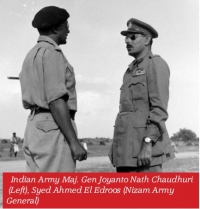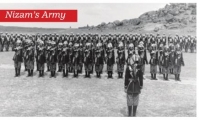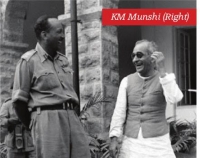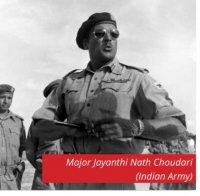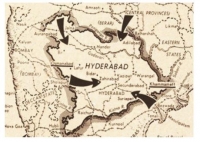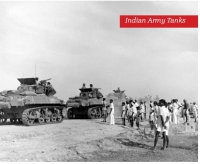- SDG 14 is ‘Life Below Water :Plastic pollution. Increasing levels of debris in the world’s oceans are having a major environmental and economic impact. Marine debris impacts biodiversity through entanglement or ingestion
- SDG 14 is ‘Life Below Water :Coastal waters are deteriorating due to pollution and eutrophication. Without concerted efforts, coastal eutrophication is expected to increase in 20 percent of large marine ecosystems by 2050.
- SDG 14 is Life Below Water :Ocean acidification has increased significantly in recent decades. Open Ocean sites show current levels of acidity have increased by 26 per cent since the start of the Industrial Revolution.
- SDG 14 is Life Below Water :Oceans absorb about 30 per cent of carbon dioxide produced by humans, buffering the impacts of global warming.
- SDG 14 is Life Below Water :Oceans provide key natural resources including food, medicines, biofuels and other products. They help with the breakdown and removal of waste and pollution, and their coastal ecosystems act as buf
Operation Polo

On 18th September 1948, Operation Polo was terminated after the Indian Army accepted the surrender of the Nizam of Hyderabad’s army. Operation Polo was the name used to refer to the Hyderabad Police Action which was essentially a military operation under which the Indian armed forces encroached the State of Hyderabad and defeated the Nizam, obtaining the state of Hyderabad for the Indian Union.
This clash began after the Nizam of Hyderabad, Osman Ali Khan Asaf Jah VII decided that the Princely State of Hyderabad will not join India nor Pakistan after Partition. The decision of the Nizam was supported by Pakistan. Being cautious of an opposing independent state in the middle of India, Sardar Patel, the then Deputy Prime Minister, made a decision to annex the state of Hyderabad to India and sent the Indian Army to Hyderabad for the same. Spread over most of the Deccan Plateau, the Hyderabad State was established by Nizam-ulMulk Asaf Jah in 1724 after the end of the Mughal Empire. The Nizam was a Muslim, but most of his subjects (85%) were Hindu. In 1798 the Royal state of Hyderabad was the first state to agree to British Protection under the policy of Subsidiary Alliance.
In 1947 when the British left India, they gave princely states the choice to either join India or Pakistan or remain as independent states. Under the rule of Mir Usman Ali, the Hyderabad state was very prosperous and had its own army, railway and airline network, postal system and radio network. The Nizam wanted to keep Hyderabad independent, though the Indian union did not like the idea of having an independent and possibly hostile state in the middle of the country and decided to annex Hyderabad state and make it part of the Indian Union. Most other 565 princely states had either decided to join India or Pakistan by then. Initially, the Nizam of Hyderabad approached the British Government with a request to get the status of an independent constitutional monarchy under the British Commonwealth of Nations. The British did not agree to the Nizam’s request. The then Indian Home Minister Sardar Patel requested the Nizam to join India, but he refused and instead declared Hyderabad an independent nation on 15th August 1947, the day Indian received Independence. Shocked by the idea on an independent Hyderabad right in the heart of India, Sardar Patel consulted with the Governor General of India, Lord Mountbatten and he suggested Patel to resolve the challenge without having to resort to force. The Indian Government then offered Hyderabad a Standstill Agreement, which assured the state that no military action would be taken against it. Unlike the other princely states which acceded to either India or Pakistan, Hyderabad only promised India that it would not join Pakistan. Hyderabadi ambassadors accused India of economically isolating the state and the Indian on the other hand accused the Hyderabadis of importing firearms from Pakistan.
In June 1948, Lord Mountbatten proposed the Heads of Agreement deal which gave Hyderabad the status of an autonomous dominion nation under India. The deal required the restriction of its armed forces and the adjourning of its voluntary forces. Hyderabad would be allowed to govern its territory, but only foreign affairs would be handled by the Indian Government. The deal was signed by India, but the Nizam refused to sign this saying that he either wanted complete independence or the status of a dominion under the British Commonwealth of Nations. While these negotiations were being carried out, communal riots between Hindus and Muslims had broken out in Hyderabad. The state was also busy arming itself and was receiving arms from Pakistan and the Portuguese administration in Goa.
As soon as the Indian Government received information that Hyderabad was arming itself and planning to ally with Pakistan, Sardar Patel described the idea of an Independent Hyderabad as "an ulcer in the heart of India which needed to be removed surgically". The battle between India and Hyderabad began on 13th September 1948 and ended on 18th September 1948 after which the Nizam’s army surrendered to the Indian Army and Hyderabad became a part of the Union of India. This war which lasted five days resulted in loss of life and casualties and it is estimated that 32 were killed and 97 injured on the Indian side and 490 killed and 122 wounded on the Hyderabadi side.
Day 1, 13 September
The first battle was fought at Naldurg Fort on the Solapur Secundarabad Highway between a defending force of the 1st Hyderabad Infantry and the attacking force of the 7th Brigade. Using speed and surprise, the 7th Brigade managed to secure a vital bridge on the Bori river intact, following which an assault was made on the Hyderabadi positions at Naldurg by the 2nd Sikh Infantry. The bridge and road secured, an armoured column of the 1st Armoured Brigade – part of the Smash force – moved into the town The first battle was fought at Naldurg Fort on the Solapur Secundarabad Highway between a defending force of the 1st Hyderabad Infantry and the attacking force of the 7th Brigade. Using speed and surprise, the 7th Brigade managed to secure a vital bridge on the Bori river intact, following which an assault was made on the Hyderabadi positions at Naldurg by the 2nd Sikh Infantry. The bridge and road secured, an armoured column of the 1st Armoured Brigade – part of the Smash force – moved into the town of Jalkot, 8 km from Naldurg, at 0900 hours, paving the way for the Strike Force units under Lt. Col Ram Singh Commandant of 9 Dogra (a motorised battalion) to pass through. The first day on the Western front ended with the Indians inflicting heavy casualties on the Hyderabadis and capturing large tracts of territory. Amongst the captured defenders was a British
mercenary who had been tasked with blowing up the bridge near Naldurg.
In the East, forces led by Lt. Gen A.A. Rudra met with fierce resistance from two armoured car cavalry units of the Hyderabad State Forces. equipped with Humber armoured cars and Staghounds, namely the 2nd and 4th Hyderabad Lancers, but managed to reach the town of Kodar by 0830 hours. Pressing on, the force reached Mungala by the afternoon.
There were further incidents in Hospet – where the 1st Mysore assaulted and secured a sugar factory from units of Razakars and Pathans – and at Tungabhadra – where the 5/5 Gurkha attacked and secured a vital bridge from the Hyderabadi army.
Day 2, 14 September
The force that had camped at Umarge proceeded to the town of Rajasur, 48 km east. As aerial reconnaissance had shown well entrenched ambush positions set up along the way, the air strikes from squadrons of Tempests were called in. These air strikes effectively cleared the route and allowed the land forces to reach and secure Rajasur by the afternoon.
The Assault force from the East was meanwhile slowed down by an anti-tank ditch and later came under heavy fire from hillside positions of the 1st Lancers and 5th Infantry 6 km from Suryapet. The positions were assaulted by the 2/5 Gurkha – veterans of the Burma Campaign – and was neutralised with the Hyderabadis taking severe casualties.
At the same time, the 3/11 Gurkha Rifles and a squadron of 8th Cavalry attacked Osmanabad and took the town after heavy street combat with the Razakars who determinedly resisted the Indians. A force under the command of Maj. Gen. D.S. Brar was tasked with capturing the city of Aurangabad. The city was attacked by six columns of infantry and cavalry, resulting in the civil administration emerging in the afternoon and offering a surrender to the Indians.
Day 3, 15 September
Leaving a company of 3/11 Gurkhas to occupy the town of Jalna, the remainder of the force moved to Latur, and later to Mominabad where they faced action against the 3 Golconda Lancers who gave token resistance before surrendering. At the town of Surriapet, air strikes cleared most of the Hyderabadi defences, although some Razakar units still gave resistance to the 2/5 Gurkhas who occupied the town. The retreating Hyderabadi forces destroyed the bridge at Musi to delay the Indians but failed to offer covering fire, allowing the bridge to be quickly repaired. Another incident occurred at Narkatpalli where a Razakar unit was decimated by the Indians.
Day 4, 16 September
The task force under Lt. Col. Ram Singh moved towards Zahirabad at dawn, but was slowed down by a minefield, which had to be cleared. On reaching the junction of the Bidar road with the Solapur-Hyderabad City Highway, the forces encountered gunfire from ambush positions. However, leaving some of the units to handle the ambush, the bulk of the force moved on to reach 15 kilometres beyond Zahirabad by nightfall in spite of sporadic resistance along the way. Most of the resistance was from Razakar units who ambushed the Indians as they passed through urban areas. The Razakars were able to use the terrain to their advantage until the Indians brought in their 75 mm guns.
Day 5, 17 September
In the early hours of 17 September, the Indian army entered Bidar. Meanwhile, forces led by the 1st Armoured regiment were at the town of Chityal about 60 km from Hyderabad, while another column took over the town of Hingoli. By the morning of the 5th day of hostilities, it had become clear that the Hyderabad army and the Razakars had been routed on all fronts and with extremely heavy casualties. At 5 pm on 17 September Nizam announced ceasefire thus ending the armed action. The events that followed the Police Action were very quick leading to a total charge in the political scenario. After the surrender of Hyderabad army, Mir Laik Ali, the Prime Minister and Kasim Razvi were arrested. On September 23rd 1948, the Nizam withdrew his complaint in the Security Council. The merger of Hyderabad dominions into the Indian Union was announced. Major General Chaudhari took over as Military Governor of Hyderabad and stayed in that position till the end of 1949. In January 1950, M. K.Vellodi, a senior civil servant was made the Chief Minister of the state. The Nizam Mir Osman Ali Khan was designated ‘Raj Pramukh'. After the 1952 General Elections, the first popular ministry headed by B. Rama Krishna Rao took charge of the state.
